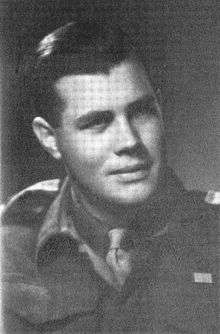1987 South African general election
The 1987 South African general election was held on 6 May 1987. The State of Emergency existing in South Africa at that time cast a cloud over the elections. It was once again won by the National Party (NP) under the leadership of P. W. Botha, although for the first time it faced serious opposition from the right of the South African political spectrum. The election resulted in the creation of the Second Botha Cabinet, which held power until 1989.
| |||||||||||||||||||||||||||||||||||||||||||||
All 166 elected seats in the House of Assembly | |||||||||||||||||||||||||||||||||||||||||||||
|---|---|---|---|---|---|---|---|---|---|---|---|---|---|---|---|---|---|---|---|---|---|---|---|---|---|---|---|---|---|---|---|---|---|---|---|---|---|---|---|---|---|---|---|---|---|
| |||||||||||||||||||||||||||||||||||||||||||||
 House of Assembly after the election | |||||||||||||||||||||||||||||||||||||||||||||
| |||||||||||||||||||||||||||||||||||||||||||||
 |
|---|
| This article is part of a series on the politics and government of South Africa |
|
|
|
Related topics |
|
|
The right-wing opposition came in the form of the Conservative Party (CP), which opposed even the limited powersharing with Indian and Coloured South Africans that had been implemented by the NP as part of a package of constitutional reforms in 1984. The CP was led by a former chairman of the Broederbond and NP cabinet minister, Andries Treurnicht, infamously known as Minister of Education under the Soweto riots. Following the election, in which the CP extended its 17 splinter MPs to win 22 seats, it replaced the Progressive Federal Party (PFP) as the official opposition in the House of Assembly.[1]
The election year also saw important political developments to the left of the NP. During 1987 Denis Worrall resigned as the South African ambassador in London to return to politics. Together with Wynand Malan (who had resigned from the NP) and Esther Lategan he formed the Independent Movement to fight the general election. Only Malan won a seat and the partnership consequently disintegrated. Denis Worrall and others subsequently went on to form the Independent Party (IP), while Esther Lategan and others formed the National Democratic Movement.
Partially as a result of the split in the votes to the liberal anti-NP parties, the PFP lost seven of its parliamentary seats as well as its role of official opposition. The New Republic Party (NRP), formerly the United Party continued its disintegration and lost four of its five seats.
Reaction
Anglican Archbishop and Nobel Peace Prize winner Desmond Tutu noted after the election, "We have entered the dark ages of the history of our country".[2]
Donald Simpson, writing in the South African newspaper, The Star, went as far as to predict that the National Party would lose the next election and that the Conservative Party would become the new government of South Africa.[3]
Results
| Party (abbr.) | Leader | Votes | % | Elected seats | Other seats1 | Total seats | Swing3 | % seats | |
|---|---|---|---|---|---|---|---|---|---|
| National Party | P.W. Botha | 1,075,642 | 52.3% | 123 | 10 | 133 | 74.7% | ||
| Conservative Party | Andries Treurnicht | 574,502 | 26.6% | 22 | 1 | 23 | 12.9% | ||
| Progressive Federal Party (PFP) | Colin Eglin | 288,579 | 14.0% | 19 | 1 | 20 | 11.2% | ||
| Herstigte Nasionale Party (HNP) | Jaap Marais | 62,888 | 3.1% | 0 | 0 | 0 | 0.0% | ||
| New Republic Party (NRP) | Bill Sutton | 40,494 | 2.0% | 1 | 0 | 1 | 0.6% | ||
| Others including Independent Movement2 | Wynand Malan Denis Worrall |
27,149 | 1.3% | 1 | 0 | 1 | 0.6% | ||
| Total | 2,069,254 | 100.0% | 166 | 12 | 178 | 100.0% |
1 Includes nominated seats and proportional seats. 2 The seat was won by the Independence Movement. 3 Since the previous election (1981).
References
- Smith, William E (18 May 1987). "South Africa: A Lurch to the Right". Time Magazine. Archived from the original on 19 August 2013.
- "South Africa Takes Step Backward". Sun-Sentinel. 9 May 1987. Archived from the original on 26 August 2016. Retrieved 27 September 2013.
- The Star, 24 May 1987


